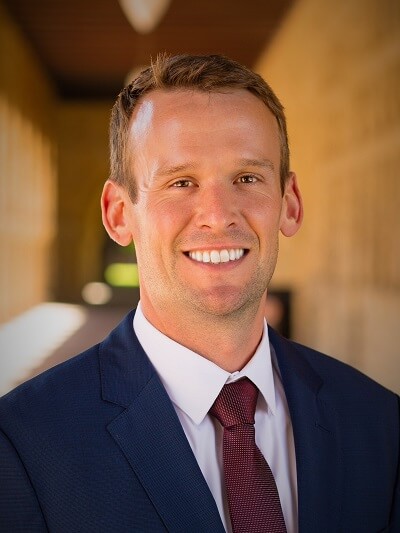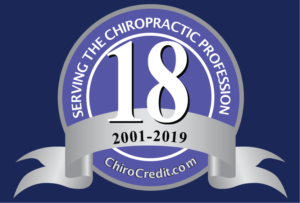052- Dr. Ken Weber Discusses Advanced MRI Techniques, Pain & Manual Therapy

Dr. Ken Weber and I discuss his research pursuits which involve: 1) developing imaging modalities that are more sensitive and specific to the pathology, providing more diagnostic, prognostic, and predictive information; 2) providing more quantitative information to the clinician; and 3) using these measures to better understand the nervous system and how it functions, the neurophysiology of pain, how treatments work, and why certain treatments work for some patients but not for others. Dr. Ken Weber is an Instructor in the Department of Anesthesia, Perioperative and Pain Medicine at Stanford University. He obtained his Doctor of Chiropractic from Palmer College of Chiropractic Florida in 2009 and then completed a PhD in neuroscience at Northwestern University in 2016, specializing in movement and rehabilitation science. Ken’s research intersects clinical pain research and advanced MRI techniques with an emphasis on brain, spinal cord, and musculoskeletal imaging. His research aims to better understand the neural and musculoskeletal changes underlying clinical pain conditions, the mechanisms of treatments, and predictors for recovery. Ken is currently supported by a K23 Mentored Patient-Oriented Research Career Development Award from the National Institute of Neurological Disorders and Stroke of the National Institutes of Health. His previous funding has included the National Center for Complementary and Integrative Health, the National Institute on Drug Abuse, and the NCMIC Foundation, Inc.
I’d also like to point out that Ken was recently selected to be part of the CARL (Chiropractic Academy for Research Leadership) program.
View Dr. Weber‘s research at researchgate.net.
Here are some of the papers we discuss in this episode.
| 1. | Machine Learning for the Prediction of Cervical Spondylotic Myelopathy: A Post Hoc Pilot Study of 28 Participants. |
| Hopkins BS, Weber KA 2nd, Kesavabhotla K, Paliwal M, Cantrell DR, Smith ZA. | |
| World Neurosurg. 2019 Jul;127:e436-e442. doi: 10.1016/j.wneu.2019.03.165. Epub 2019 Mar 25. | |
| PMID: 30922901 [PubMed – indexed for MEDLINE] | |
| Similar articles |
| 2. | Are Magnetic Resonance Imaging Technologies Crucial to Our Understanding of Spinal Conditions? |
| Crawford RJ, Fortin M, Weber KA 2nd, Smith A, Elliott JM. | |
| J Orthop Sports Phys Ther. 2019 May;49(5):320-329. doi: 10.2519/jospt.2019.8793. Epub 2019 Mar 26. | |
| PMID: 30913967 [PubMed – in process] | |
| Similar articles |
| 3. | Lateral Corticospinal Tract Damage Correlates With Motor Output in Incomplete Spinal Cord Injury. |
| Smith AC, Weber KA 2nd, O’Dell DR, Parrish TB, Wasielewski M, Elliott JM. | |
| Arch Phys Med Rehabil. 2018 Apr;99(4):660-666. doi: 10.1016/j.apmr.2017.10.002. Epub 2017 Oct 26. | |
| PMID: 29107041 [PubMed – indexed for MEDLINE] Free PMC Article | |
| Similar articles |
| 4. | Evidence for decreased Neurologic Pain Signature activation following thoracic spinal manipulation in healthy volunteers and participants with neck pain. |
| Weber Ii KA, Wager TD, Mackey S, Elliott JM, Liu WC, Sparks CL. | |
| Neuroimage Clin. 2019;24:102042. doi: 10.1016/j.nicl.2019.102042. Epub 2019 Oct 18. | |
| PMID: 31670070 [PubMed – in process] Free PMC Article | |
| Similar articles |
| 5. | Deep Learning Convolutional Neural Networks for the Automatic Quantification of Muscle Fat Infiltration Following Whiplash Injury. |
| Weber KA, Smith AC, Wasielewski M, Eghtesad K, Upadhyayula PA, Wintermark M, Hastie TJ, Parrish TB, Mackey S, Elliott JM. | |
| Sci Rep. 2019 May 28;9(1):7973. doi: 10.1038/s41598-019-44416-8. | |
| PMID: 31138878 [PubMed – in process] Free PMC Article | |
| Similar articles |














Leave a Reply
Want to join the discussion?Feel free to contribute!